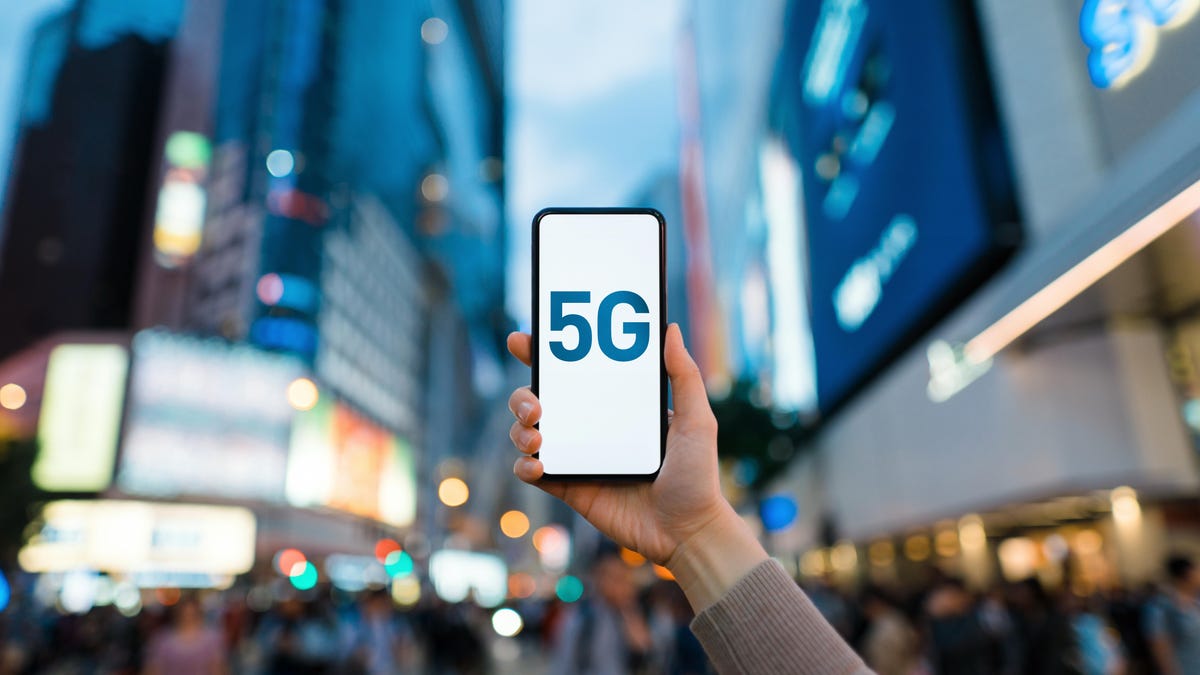
Woman’s hand using smartphone against illuminated financial district in the city, with the concept … [+]
Getty
When it comes to the 5G roll-out, AI will definitely be supercharged.
“AI is a huge priority,” said John Smee, who is the VP of engineering and head of 5G R&D for Qualcomm. “We are seeing at transformation happening, with AI going from the cloud to being distributed, such as on the edge or IoT devices.”
In preparation for this, Qualcomm has been embedding AI capabilities on its chips. Note that its AI engine has applications for cameras, battery life, security and gaming—allowing for neural network processing.
“5G will cause a proliferation in sensors all around us, and each one of those sensors is a new input available to create better models,” said Jake Moskowitz, who is the Head of the Emodo Institute at Ericsson Emodo. “Many of these 5G sensors will directly enable vast data aggregation for remote monitoring and immediate reaction. In some cases, there will be opportunities to use those sensors as AI inputs. In other cases, there will be new AI efforts that require the distribution of new sensors.”
All this is certainly exciting and there will be many opportunities for innovation. So then what types of applications might we see with AI because of the 5G megatrend?
Let’s take a look:
Sanyogita Shamsunder, VP of 5G Ecosystems and Technology Innovation at Verizon:
MORE FOR YOU
Imagine using 5G and AI to create realistic human representations that can interact with you in real-time to provide remote counseling or just companionship. In our 5G Labs, we are working on AI-based “Digital Human” technology. Life-like, emotionally responsive digital humans that have personality and character can literally talk face-to-face with users and respond to vocal and facial expressions. They have a digital brain that triggers their facial expressions and responses so if a person shows frustration, they read their emotional state and react with empathy.
Steve Canepa, Global Managing Director of telecommunications, media, and entertainment at IBM:
There really is no limit on the number of use cases that can be enhanced with 5G, and we’re just now realizing some of the benefits as we’re still in the early stages of this transformation. Through our partnership with Samsung, we’ve built a platform, leveraging IBM cloud and AI innovations, for mobile devices operating on a 5G network that will quickly generate and communicate alerts to firefighters or law enforcement officers–addressing potential life-threatening situations before they escalate. Using 5G mobile solutions, these devices can also be customized to withstand intense environments, such as those encountered by a soldier in the field, power plant employees working in harsh weather conditions, an emergency worker responding to a disaster or a worker in a mining plant.
Bret Greenstein, Senior Vice President and Global Markets Head for AI and Analytics at Cognizant:
Smart, AI-based devices that operate at the edge for buildings, cities, and vehicles, can make complex decisions in real-time based on the data they see. Imagine a camera that can understand what it is seeing in real time and decides what actions to take based off the images it sees. This whole system will fit on a chip in an image sensor that can be mounted almost anywhere. So, if all the decision making is happening in this smart edge device, why do we need 5G? Well, each device only knows the data local to itself—images, sound, temperatures, etc. If you bring in high speed data you can give that AI-driven device more context. For instance, an image sensor in a car can use AI and detect a road hazard. If it can communicate in high speed with low latency, it can share that data with other cars to help them avoid the hazard, or it can incorporate data from other cars to optimize a route to ensure on-time arrival, considering traffic and weather ahead across multiple routes.
Russell James, Vice President of AI & Compute Strategy at Imagination Technologies:
Another potential area of benefit in AI from 5G is in Artificial Intelligence of Things or AIoT. One area of AIoT is home surveillance, which mainly utilizes Wi-Fi for its communications, with some products including 4G LTE sim cards for emergency backup. The issue with this is that it’s reliant on the home broadband connection to upload video for processing and/or storage and reliant on there being sufficient Wi-Fi access point coverage around the home. Having 5G enabled home surveillance systems will enable multiple video streams to be uploaded to the cloud for storage and processing, without overly taxing a home broadband link and be independent of access point coverage (although obviously dependent on good 5G signal strength).
Tom Foottit, VP of Product Management at Accedian:
Today, when you ask your AI-powered voice assistant on your mobile device a question, it takes a few seconds to respond because it goes out to the cloud to process the request and get an answer. While this is fine when I’m asking what the weather is, what if your use-case requires a response in milliseconds? The ability to process data in near real-time on 5G networks will open up many new AI-powered possibilities across many industries.
Dheeraj Remella, CPO at VoltDB:
The more data that is getting collected, the more you can train ML models and use the insight outcomes for better decision making, and the handling of false-positives or false-negatives. When you combine this with highly accurate sensors and imaging technologies, you can start visualizing smart city applications like automated driving detection from roadside light posts, reducing amber alert resolution time frames, as well as using automatic fast path detection and clearance for emergency vehicles.
Tom (@ttaulli) is the author of Artificial Intelligence Basics: A Non-Technical Introduction and The Robotic Process Automation Handbook: A Guide to Implementing RPA Systems.
